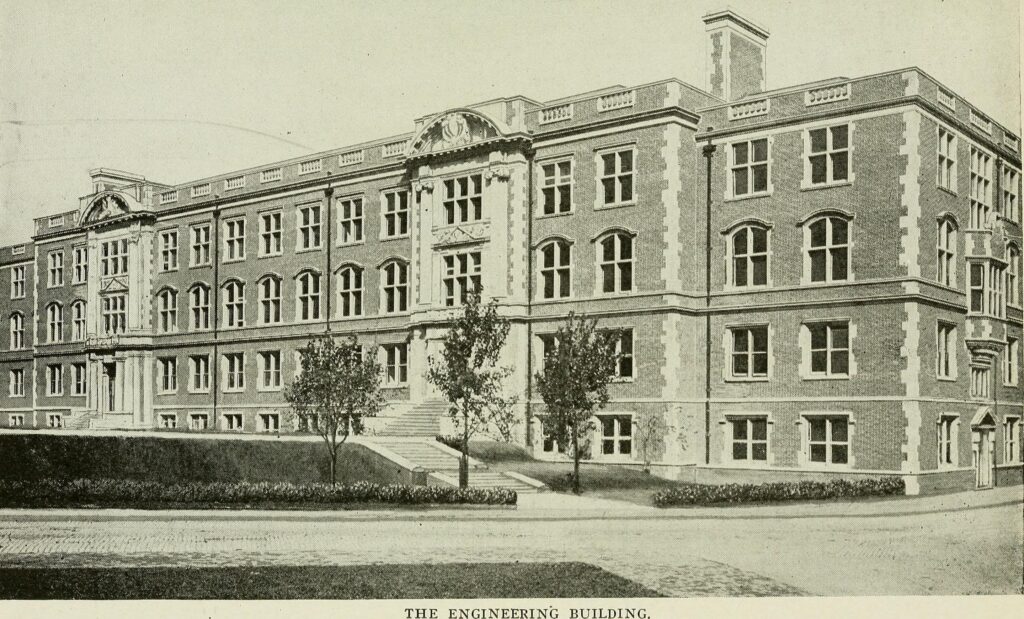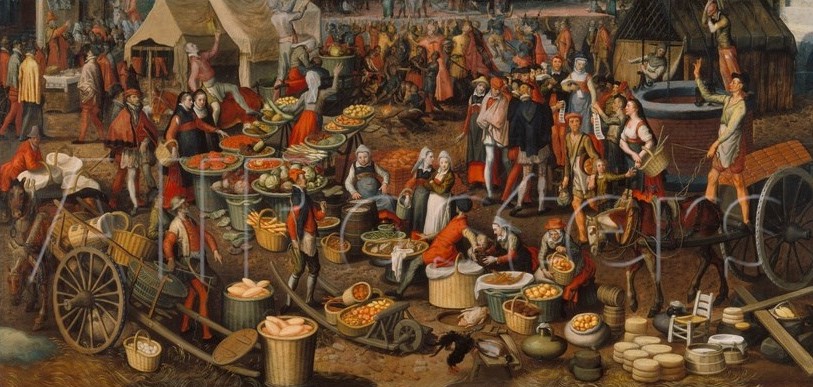
Modern marketing is an intricate fusion of science and art that is fueled by data, imagination, and a profound comprehension of human behavior. We present, Marketing History!
However, where did it all start? We must travel back in time to comprehend the beginnings of marketing, following its roots from prehistoric societies to the digital era. Now grab a cup of coffee and come learn about the amazing history of marketing with us!
Early History: The Origins of Trade
The history of marketing predates the phrase itself by a long shot. Marketing started to take shape in its most primitive form as early as 4,000 BC. The origins of marketing can be found in Mesopotamia, as this region produced the first trade and barter systems. Farmers, craftspeople, and merchants relied on word-of-mouth marketing to market their products as they traded goods and services.
Among the earliest people to employ signs and symbols to draw clients were the ancient Egyptians. They created a crude but successful type of outdoor advertising by painting images on walls and stones to promote their products. Imagine yourself strolling through a busy Egyptian marketplace where vibrant images of textiles, spices, and pottery compete for your attention.
Public Relations and Propaganda in the Roman Empire
When we travel back in time to the Roman Empire, we witness a change in the course of marketing evolution. The Romans were experts in propaganda and public relations. To spread their ideas, they employed coins, speeches, and open gatherings. Emperors and political figures would inscribe their accomplishments on coins to guarantee that their legacy would be propagated widely.
The Romans were likewise aware of the importance of branding. They used trademarks and emblems, which were the forerunners of contemporary logos, to mark their goods. In order to draw clients, Roman traders employed persuasive strategies in their crowded marketplaces by providing samples and demonstrations.
The Medieval Ages: Guilds and Market Fairs
Market fairs and trade guilds became more popular during the Middle Ages, and this had a big impact on the evolution of marketing. Market fairs were vivacious, transient venues where traders from different areas came together to offer their wares. These fairs were frequently bustling occasions featuring food vendors, performers, and a clamorous crowd of hawkers advertising their wares.
Trade guilds, on the other hand, were associations of merchants and artisans that oversaw commerce and guaranteed standards of quality. By employing signs and symbols to denote their affiliation and areas of specialty, these guilds created the first forms of advertising. A blacksmith’s guild, for example, might use an anvil and hammer as its logo, a customer-recognizable symbol of excellence.

Renaissance: The Inception of Contemporary Advertising
With the invention of the printing press in the fifteenth century, marketing underwent a dramatic change throughout the Renaissance. The dissemination of information was transformed by Johannes Gutenberg’s innovation, opening the door for the first printed advertisements. These early advertisements, which promoted anything from books to medications, were published in pamphlets and newspapers.
At this point, marketing started to adopt a more methodical approach. Businesses and merchants began to realize how important it was to target particular groups and create messages that would persuade them. To draw in clients, they employed attention-grabbing graphics, memorable slogans, and client endorsements.
The Industrial Revolution: The Birth of Mass Marketing
Marketing underwent a radical transformation throughout the 18th and 19th centuries Industrial Revolution. As factories and mass production proliferated, companies required innovative strategies to expand their customer base. Mass marketing began to emerge at this time, and consumer culture grew.
Newspapers and magazines in particular became the main print media outlets for advertising. During this time, companies like Coca-Cola and Kellogg’s arose and used eye-catching advertising to increase consumer loyalty and brand recognition. The idea of branding started to take shape as businesses established unique identities to set themselves apart from rivals.
The 20th Century: The Advertising Golden Age
A common term used to describe the 20th century is “the golden age of advertising.” In the field of marketing, there was a great deal of originality and innovation at this time. Influential commercials like Nike’s “Just Do It” and Coca-Cola’s “I’d Like to Buy the World a Coke” made a lasting impression on popular culture, and radio and television emerged as effective means of connecting with consumers.
The development of consumer psychology and market research made marketing a more scientific field. To gain a deeper understanding of their target consumers, companies started to carry out demographic research, focus groups, and surveys. The “Mad Men” era began in the 1960s and 1970s when advertising firms like McCann Erickson and Ogilvy & Mather created some of the most iconic commercials in history.
The Digital Era: A Novel Approach
With the introduction of the internet and digital technologies, as we go into the twenty-first century, marketing has experienced yet another transformation. Search engine optimization (SEO), content marketing, social media, and other new marketing techniques are products of the digital age. With only a few clicks, brands can now reach a worldwide audience, and data analytics offer never-before-seen insights into customer behavior.
Because they enable real-time customer engagement, social media platforms such as Facebook, Instagram, and Twitter have become indispensable tools for marketers. Influencer marketing has become a potent tactic that uses the popularity and authority of social media influencers to market goods and services.

Marketing’s Future: AI and Beyond
Marketing is expected to become even more dynamic and revolutionary in the future. Hyper-personalized marketing experiences are already possible thanks to artificial intelligence (AI) and machine learning. Predictive analytics, voice search, and chatbots are just a handful of the technological advancements influencing marketing in the future.
The fundamentals of marketing—knowing what customers want, developing connections, and adding value—do not alter even as we adopt new technologies. The history of marketing, from the thriving marketplaces of ancient Mesopotamia to the contemporary digital sphere, is evidence of its continuing significance in our daily lives.
The next time you hear a great song on the radio or see a brilliant advertisement on social media, keep in mind the lengthy history that has formed the marketing industry. It’s a tale of imagination, ingenuity, and an unwavering desire to establish genuine connections with people. Cheers to a bright future and the always-changing field of marketing!
Early History: The Origins of Trade
The history of marketing predates the phrase itself by a long shot. Marketing started to take shape in its most primitive form as early as 4,000 BC. The origins of marketing can be found in Mesopotamia, as this region produced the first trade and barter systems. Farmers, craftspeople, and merchants relied on word-of-mouth marketing to market their products as they traded goods and services.
Among the earliest people to employ signs and symbols to draw clients were the ancient Egyptians. They created a crude but successful type of outdoor advertising by painting images on walls and stones to promote their products. Imagine yourself strolling through a busy Egyptian marketplace where vibrant images of textiles, spices, and pottery compete for your attention.
Public Relations and Advertising in the Roman Empire
When we travel back in time to the Roman Empire, we witness a change in the course of marketing evolution. The Romans were experts in propaganda and public relations. To spread their ideas, they employed coins, speeches, and open gatherings. Emperors and political figures would inscribe their accomplishments on coins to guarantee that their legacy would be propagated widely.
The Romans were likewise aware of the importance of branding. They used trademarks and emblems, which were the forerunners of contemporary logos, to mark their goods. In order to draw clients, Roman traders employed persuasive strategies in their crowded marketplaces by providing samples and demonstrations.

The Medieval Ages: Guilds and Market Fairs
Market fairs and trade guilds became more popular during the Middle Ages, and this had a big impact on the evolution of marketing. Market fairs were vivacious, transient venues where traders from different areas came together to offer their wares. These fairs were frequently bustling occasions featuring food vendors, performers, and a clamorous crowd of hawkers advertising their wares.
Trade guilds, on the other hand, were associations of merchants and artisans that oversaw commerce and guaranteed standards of quality. By employing signs and symbols to denote their affiliation and areas of specialty, these guilds created the first forms of advertising. A blacksmith’s guild, for example, might use an anvil and hammer as its logo, a customer-recognizable symbol of excellence.
Renaissance: The Inception of Contemporary Advertising
With the invention of the printing press in the fifteenth century, marketing underwent a dramatic change throughout the Renaissance. The dissemination of information was transformed by Johannes Gutenberg’s innovation, opening the door for the first printed advertisements. These early advertisements, which promoted anything from books to medications, were published in pamphlets and newspapers.
At this point, marketing started to adopt a more methodical approach. Businesses and merchants began to realize how important it was to target particular groups and create messages that would persuade them. To draw in clients, they employed attention-grabbing graphics, memorable slogans, and client endorsements.
The Industrial Revolution: The Birth of Mass Marketing
Marketing underwent a radical transformation throughout the 18th and 19th centuries Industrial Revolution. As factories and mass production proliferated, companies required innovative strategies to expand their customer base. Mass marketing began to emerge at this time, and consumer culture grew.
Newspapers and magazines in particular became the main print media outlets for advertising. During this time, companies like Coca-Cola and Kellogg’s arose and used eye-catching advertising to increase consumer loyalty and brand recognition. The idea of branding started to take shape as businesses established unique identities to set themselves apart from rivals.
The 20th Century: The Advertising Golden Age
A common term used to describe the 20th century is “the golden age of advertising.” In the field of marketing, there was a great deal of originality and innovation at this time. Influential commercials like Nike’s “Just Do It” and Coca-Cola’s “I’d Like to Buy the World a Coke” made a lasting impression on popular culture, and radio and television emerged as effective means of connecting with consumers.
The development of consumer psychology and market research made marketing a more scientific field. To gain a deeper understanding of their target consumers, companies started to carry out demographic research, focus groups, and surveys. The “Mad Men” era began in the 1960s and 1970s when advertising firms like McCann Erickson and Ogilvy & Mather created some of the most iconic commercials in history.

The Digital Era: A Novel Approach
With the introduction of the internet and digital technologies, as we go into the twenty-first century, marketing has experienced yet another transformation. Search engine optimization (SEO), content marketing, social media, and other new marketing techniques are products of the digital age. With only a few clicks, brands can now reach a worldwide audience, and data analytics offer never-before-seen insights into customer behavior.
Because they enable real-time customer engagement, social media platforms such as Facebook, Instagram, and Twitter have become indispensable tools for marketers. Influencer marketing has become a potent tactic that uses the popularity and authority of social media influencers to market goods and services.
Marketing’s Future: AI and Beyond
Marketing is expected to become even more dynamic and revolutionary in the future. Hyper-personalized marketing experiences are already possible thanks to artificial intelligence (AI) and machine learning. Predictive analytics, voice search, and chatbots are just a handful of the technological advancements influencing marketing in the future.
The fundamentals of marketing—knowing what customers want, developing connections, and adding value—do not alter even as we adopt new technologies. The history of marketing, from the thriving marketplaces of ancient Mesopotamia to the contemporary digital sphere, is evidence of its continuing significance in our daily lives.
The next time you hear a great song on the radio or see a brilliant advertisement on social media, keep in mind the lengthy history that has formed the marketing industry. It’s a tale of imagination, ingenuity, and an unwavering desire to establish genuine connections with people. Cheers to a bright future and the always-changing field of marketing!




